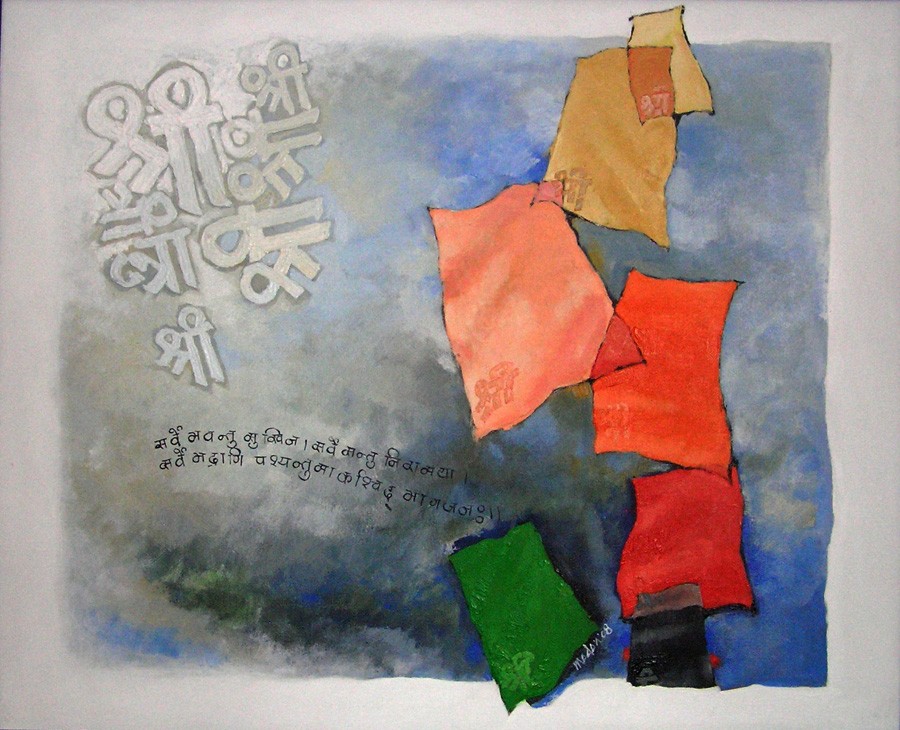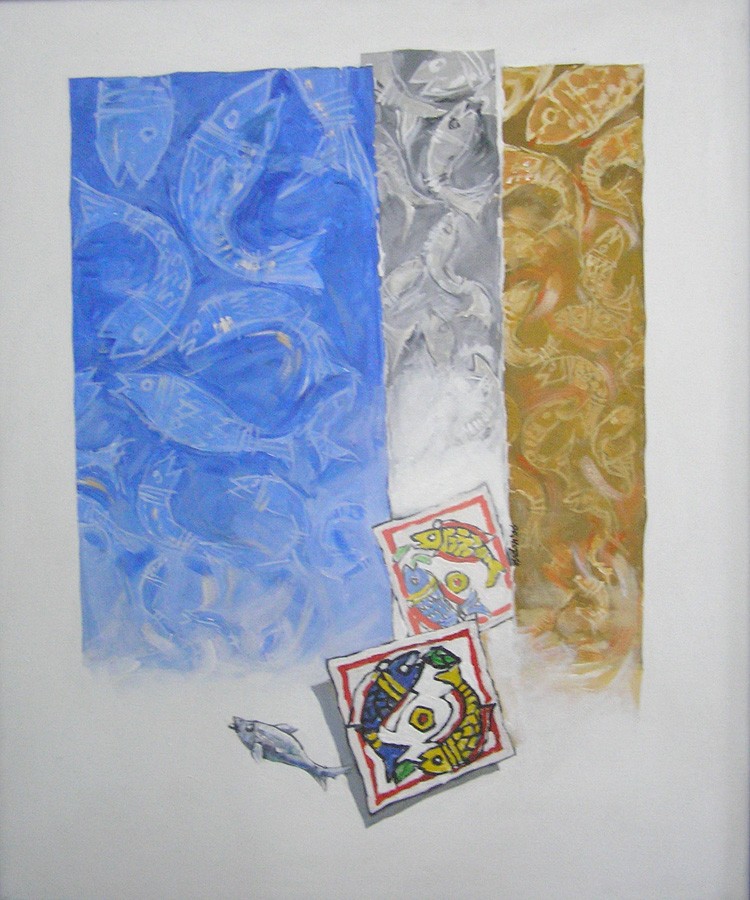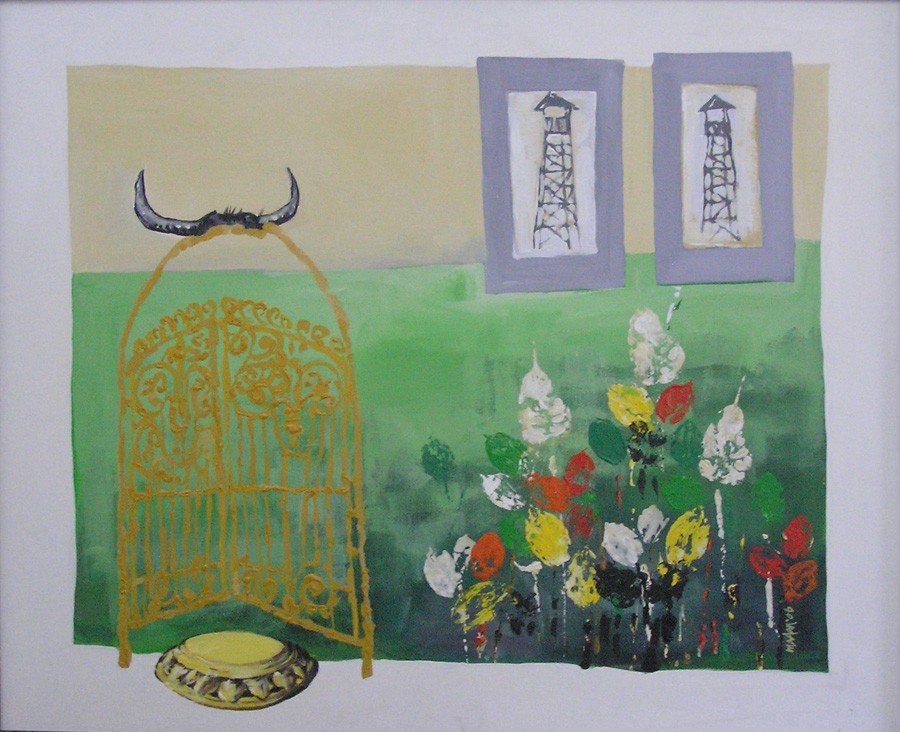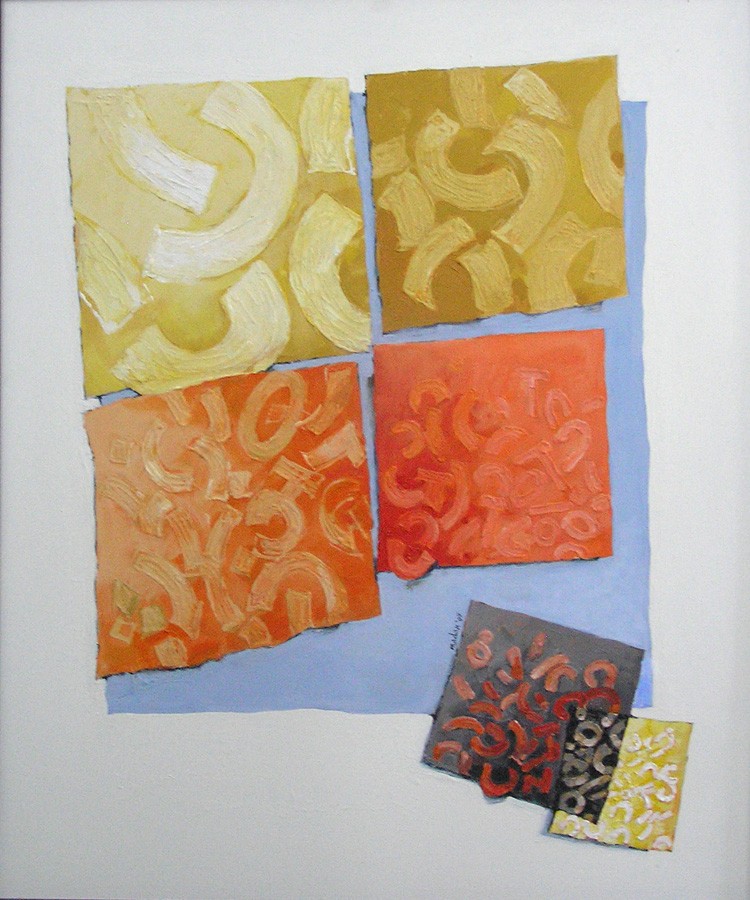Madan Chitrakar
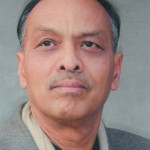
Madan Chitrakar creates both abstract and figurative paintings. His figurative works make the viewers aware of the Nepali culture capturing the medieval sculptures and architecture of Kathmandu valley. “The Vanishing Heritage”- a collection of sketches and drawings rendered from and around Kathmandu valley is an expression of concern on the fast eroding sense of pride on the past heritage of Kathmandu.
Madan Chitrakar creates both abstract and figurative paintings. His figurative works make the viewers aware of the Nepali culture capturing the medieval sculptures and architecture of Kathmandu valley. “The Vanishing Heritage”- a collection of sketches and drawings rendered from and around Kathmandu valley is an expression of concern on the fast eroding sense of pride on the past heritage of Kathmandu.
His figurative sketches and drawings appeal for the preservation of early art forms. On the other hand, his abstract works are experimental. They suggest peace and harmony in conflict-ridden world through the use of lines, colours and forms. Abstract is only feeling beyond physical reality where one simply experiences peace and serenity. His colours are traveling between infinity and concrete; and in some cases back to nature.
He creates balance between concrete images and abstract feelings through the use of rhythmic lines, and complementary and harmonious colours. His abstract paintings do not depict social conflict, pain and suffering but suggest peace and serenity.
Some of his works anthropomorphize and divinize the nature, that is, the images of nature appear and behave like human or divine beings. Mighty Himalayan peak, for that matter, is painted with divine eyes. The floating verbal texts in the atmosphere recreate the echo of religious mantras. Shivalinga and mandalas are recurrent images in his paintings.
The effect of political conflict is also apparent in his composition. He captures the rural setting with roofless vacant cottages, broken walls, blood-drenched floor and uncultivated field. The landscape implies that the villagers abandoned their home and migrated to town due to unbearable violence.
Another theme of his works is disintegration of nation and nationality. The national flag is torn apart in a dozen of pieces. The images of the sun and the moon, the symbols of the flag are separately floating in the air.
There is irony and paradox in the presentation of nature. The tree on the ground is withering due to the poisonous and burning atmosphere. On the contrary, beneath the soil, healthy green trees grow downward. This is the analogy that the ambiance where we exist is not worth living. There is the irony in the use of colours as well. Soft and cheerful colours, at first sight, give a sense of comfort, but actually they conceal the gruesome tragic world.
For consolation, the artist again returns to the myth and spirituality. He inscribes religious mantras, particularly the “Om” on the immense image of earth which is in motion. The artist exploits the belief that the universe is innate within the mantra itself. Thus, all the plants, animals and things including the artist himself are within the mantra. In other words, you and me, or the world and me are the same single entity.
Son of Tej B. Chitrakar – the doyen of modern Nepali Painting and Smt. Mana Chitrakar (both late).
Education:
GD (Applied Art), Bombay
MA (History & Culture) Tribhuvan University, Kathmandu
INCO-Graphic Design, The Hague, The Netherlands.
Associated with the then HMG/Nepal as senior artist, Design expert and division incharge-publications/International publicity etc. 1970 – 1999 AD
(Ministry of Education & Culture and later Dept. of Tourism, Ministry of Tourism & Civil Aviation)
Associated with organizational activities since very early days of student life in Bombay, Remained chairman of Artists Society of Nepal (1992 – 1998 AD). (Continues to remain active till to date various capacities.
Recipient of many awards and decorations including Prabal Gorkha Dakshin Bahu in 1996 AD and many other appreciation’s.
Participation:
Mostly all the senior level group shows organized within the country and abroad including 5th and 6th Asian Art Biennalle, Dhaka, Bangladesh. Heed the Nepali artist’s delegation in 6th Biennalle.
Present show remains the 7th solo exhibition.
A frequent contributor of essays/appreciation’s on art and culture in vermicular and English in various local journals and catalogues.
Authored ‘Tej Bahadur Chitrakar-icon of a transition’ -2004 – a monograph on the late painter.
Collections:
USA, UK, France, Germany, Japan, South Korea, India and Nepal.
Travel:
Asia and W. Europe.
Presently associated as visiting faculty:
Fine Art Campus, Bhotahity, Kathmandu
Sirjana College of Fine Arts, Lazimpat, Kathmandu
KU Centre for Art & Design, Mandikhatar, Kathmandu

